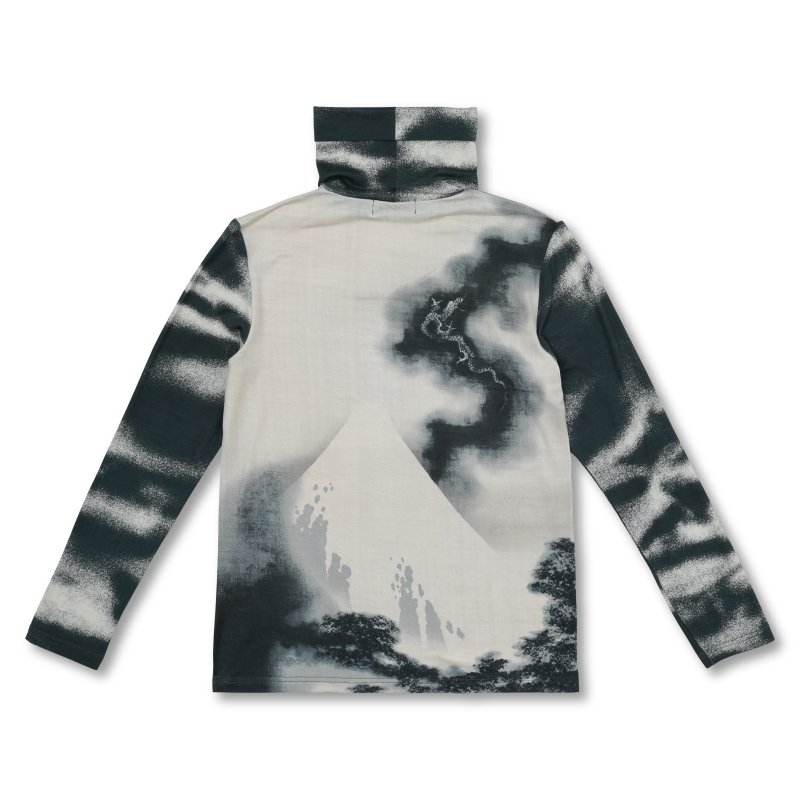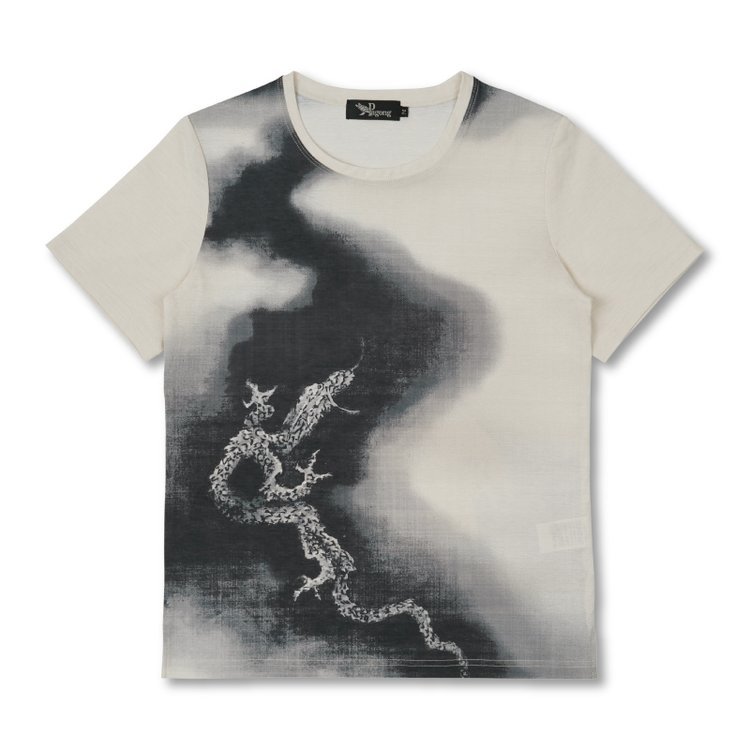HOKUSAI'S FINAL MASTERPIECE "DRAGON FLYING OVER MOUNT FUJI"
Katsushika Hokusai (1760-1849) was to spend his final years passionately absorbed in making a rare collection of “free-hand” paintings, quite unlike any of his previous ukiyo-e print-works which he is most world-renown for.
Hokusai’s enduring passion to portray Mount Fuji, Japan’s sacred mountain, is a challenge he continued to pursue for his entire lifetime. The many ephocal events of his long prolific career seem to culminate in his final masterpiece, “Dragon Flying Over Mount Fuji” where we the viewer are given the rare opportunity to look deeply into the stillness and peace within the artist’s final year.
Although Hokusai’s apprenticeship in woodblock printing began at the age of 15, it was in Hokusai’s early 30’s, which were to have been filled with much turmoil, that brought about years of deep personal change. Hokusai’s printmaking sensei, master Katsukawa Shunsho, who was one of the foremost ukiyo-e artists of the time, and whom would truly impact Hokusai’s direction in life, was to have passed away suddenly. In the very same year, Hokusai’s young wife also passed away, leaving Hokusai solely responsible to raise their three children, a son and two daughters.
Eventually he would remarry, and during this joyful time of his life, he would adopt the name Hokusai. This important change of name was to mark what is now called the “golden age“ of Hokusai’s works, which was to continue for the remainder of his life. The name Hokusai translates to “North Star Studio,” Hokusai being a Buddhist, he associated the North Star with Myoken, a Buddhist deity.
The many choices of Hokusai’s names, 30 in all, and his frequent depiction of Mount Fuji were to have directly stemmed from his religious and spiritual beliefs, and also from the ancient philosophy surrounding the sacredness of Mount Fuji, known as the “the mountain of immortality.” Mount Fuji’s link with “eternal life,” was to be at the very heart of Hokusai’s obsession with the mountain as he said:
“The entire secret of eternal life was given to this volcano, which continues producing smoke filled with answers till the end of time, therefore remaining alive forever.”
It was when Hokusai was in his 80’s, having weathered many unsettling setbacks, there was one fateful incident which would completely change the course of his later years for the better. It was the introduction by a friend to Takai Kozan, a supplier of goods to nobles in Kyoto, and one of the wealthiest farmer-merchants in his hometown of rural Obuse, Nagano.
Kozan, being highly-educated, kept company with leading thinkers and literati of the day; could write poetry, studied several languages-including Chinese, and most importantly, would become Hokusai’s much needed patron of the arts. This “chance” meeting with Takai Kozan, then in his 30’s, and Hokusai in his 80’s, became a lasting friendship of deep mutual respect, and the perfect environment for Hokusai’s boundless creativity.
In Obuse, Nagano, Hokusai was given a private dwelling to live and work in, allowing him the creative freedom to fulfill his ambition to continuously paint, a life-long dream. Appropriately named “Yuzenro,” meaning “permission to do as you please, unconcerned for what others might think,” this was the perfect setting for Hokusai to further develop his own diverse painting techniques and style.
Hokusai would receive financial support, and more importantly, the deep bond of friendship from Takai Kozan for the rest of his life. There was no one else who completely understood Hokusai’s ambitions better than Kozan; providing him with a safe, secure environment for nothing short of genius.
“DRAGON FLYING OVER MOUNT FUJI”
The whole of “Dragon Flying Over Mount Fuji” is the brushwork of sumi ink wash painting, with the highlighted whiteness of Mount Fuji being expressed through unpainted silk canvas.
The painting’s focus is a depiction of snow-covered majestic Mount Fuji, front-and-center, drawing us in with Hokusai’s dynamic composition and controlled lines. Low rocky terrain is visible in the foreground, separated from Mount Fuji by the forest on the right and black clouds rising on the left, these winding black clouds then cross behind Mount Fuji before rising again toward the heavens on the right.
In the midst of these smoke-like clouds, a dragon climbs to the heavens. The great dragon is fierce, yet carries a hint of trepidation, graceful yet boisterous, free but forever captured in its ascension.
At the time this painting, Hokusai had taken yet another art name for himself, Gakyo Rojin Manji, (which means “Manji, the old man mad for painting”), and is how he signs the painting. Next to this new signature, Hokusai also has written, “from the brush of Manji, old man of ninety born in the dragon year, 1760, on the dragon day of the first month, 1849,” which suggests to us that this was Hokusai’s first work of the New Year in the year of his death, and it is widely accepted that the dragon represents Hokusai himself.
Takai Kozan, perhaps becoming one Hokusai’s closest friends, recorded in his journal “Jushudo Shujin,” that he purchased “Dragon Flying Over Mount Fuji,” on the 11th day of the 3rd month of 1853. It later passed into other hands in Obuse before being purchased by the Hokusai-kan Museum in 1987.
“Perhaps I will master the essence of art after I reach the age of 90, and go beyond the limits of God at 100. When I am decades into 100 years, it will seem like every single detail has come to life.”
From Hokusai’s “One Hundred Views of Mount Fuji”-Volume One
This deep devotion to technique is worthy indeed of an ”old man mad for painting,” who left the art world a richer place with a lifetime of over 30,000 completed works. The genius of Hokusai’s legacy of drawings, prints, and outstanding paintings continues to profoundly affect all of us, and will no doubt affect the world’s appreciation of Japanese art for countless generations to come.










